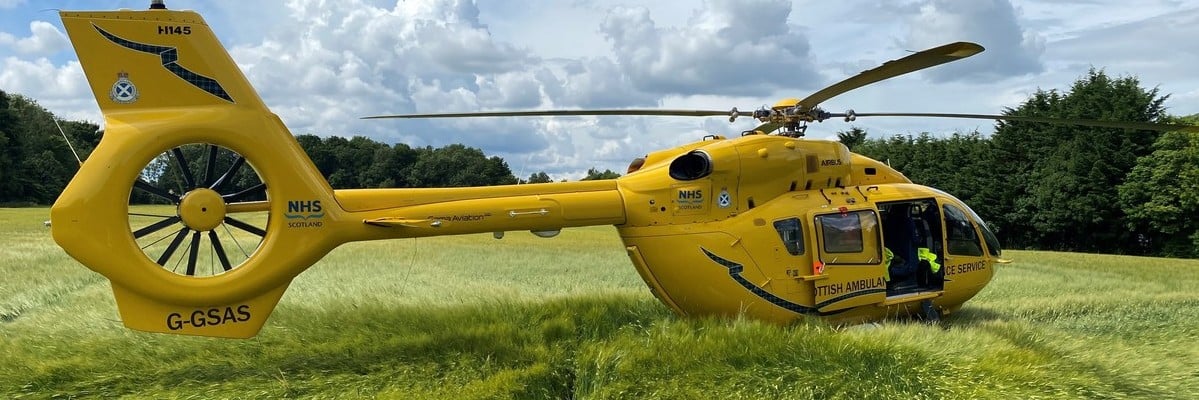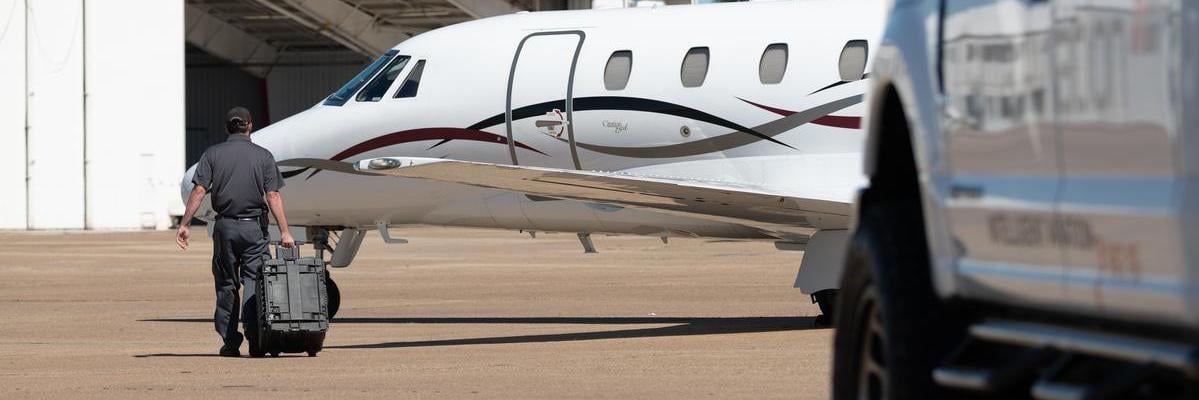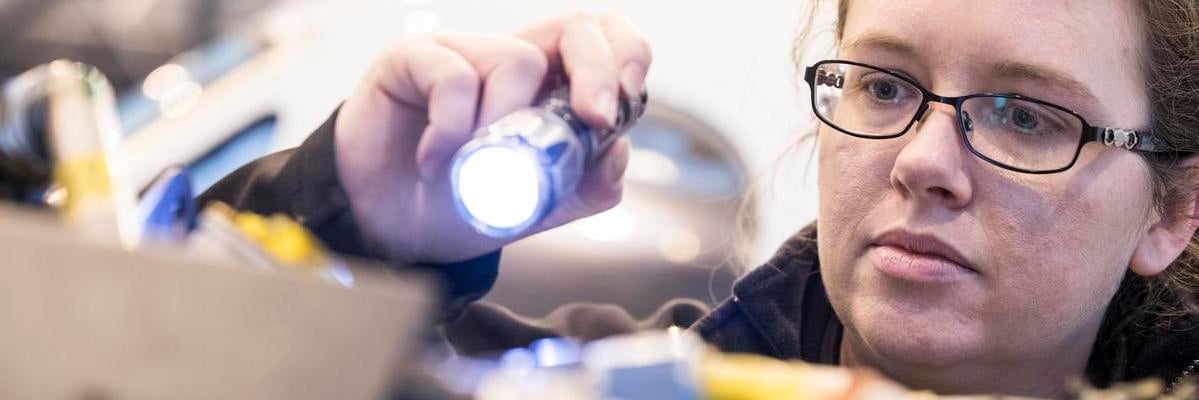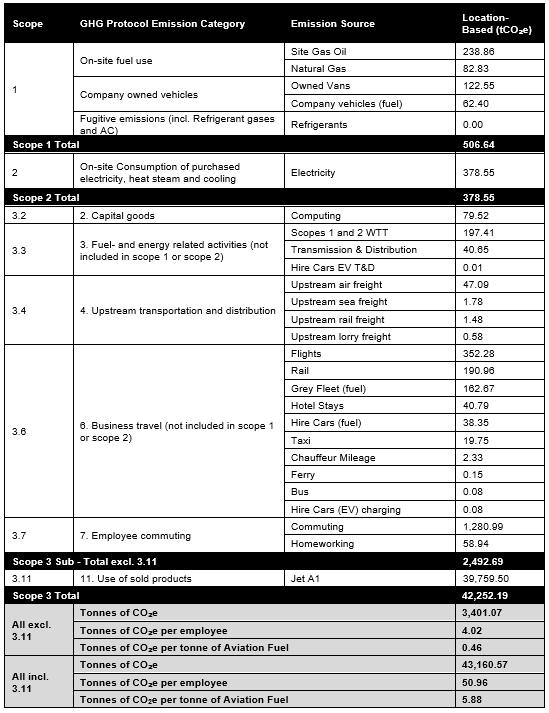Streamlined Energy & Carbon Reporting for the financial year ending 31st December 2024
The Group has appointed Carbon Footprint Ltd, a leading carbon and energy management company, to assess independently its Greenhouse Gas (GHG) emissions in accordance with the UK Government’s ‘Environmental Reporting Guidelines: Including Streamlined Energy and Carbon Reporting Guidance’.

The Group’s definition of its carbon footprint for SECR
For the purposes of the SECR report, the Group has defined its carbon footprint as a measure of the impact its activities have on the environment in terms of the amount of greenhouse gases produced, measured in units of carbon dioxide equivalents (CO2e). The Group’s carbon footprint is therefore made up of two parts, direct and indirect emissions.
Direct emissions
Direct emissions are produced by sources which are owned or controlled by the reporting organisation and include electricity use, burning oil or gas for heating, and fuel consumption as a result of business travel or distribution. Direct emissions correspond to elements within scopes 1, 2 and 3 of the World Resources Institute GHG Protocol, as indicated below.
- Electricity, heat or steam generated on-site
- Natural gas, gas oil, LPG or coal use attributable to Company-owned facilities
- Company-owned vehicle travel
- Production of any of the six GHGs (CO2, CH4, N2O, HFCs, PFCs and SF6)
- Consumption of purchased electricity, heat steam and cooling
- Employee business travel (using transport not owned by the Company)

Indirect emissions
Indirect emissions result from a company’s upstream and downstream activities. These are typically from outsourced/contract manufacturing, and products and the services offered by the organisation. Indirect emissions correspond to scope 3 of the World Resources Institute GHG Protocol excluding employee business travel as indicated below.
- Employee commuting
- Transportation of an organisation’s products, materials or waste by another organisation
- Outsourced activities, contract manufacturing and franchises GHG emissions from waste generated by the organisation but managed by another organisation
- GHG emissions from the use and end-of-life phases of the organisation’s products and services
- GHG emissions arising from the production and distribution of energy products, other than electricity, steam and heat, consumed by the organisation
- GHG emissions from the production of purchased raw or primary materials
- GHG emissions arising from the transmission and distribution of purchased electricity
Although not required to meet the SECR legislation, the Group is reporting CO2 emissions for scope one and two as well as reporting additional scope three emissions (the scope two assessment follows the location-based approach for emissions from electricity usage). The Group’s reporting extends to all operations of the business including its wholly owned business interests in the USA, UK, Middle East and Asia.

Treatment of scope three, indirect emissions
Having received advice from Carbon Footprint Ltd, the Group’s ISO14064-1:2018 audit partner, it has further delineated scope
three, indirect emissions, into two broad categories these being:
- Scope three items indirectly associated with the delivery or growth of the Group’s business (travel, home working, etc.). The Group believes these items are directly related to its business activities and therefore should be included within our carbon footprint assessment even if that is beyond the current SECR requirement; and
- Scope three items associated directly with demand instigated by a client, this being mainly aircraft fuel consumption. The Group recognises and records these CO2 emissions and will, given the limitations of the current engine, fuel and associated technologies, work with its customers to limit and mitigate these emissions through its best endeavours

2024 verified Greenhouse Gas emissions
As a Group we have been assessing our carbon emissions since 2019 (initial baseline), though this year has re-baselined the Group’s position following:
- a significant restructuring of the Group following the sale of our US interest, Jet East
- the acquisition of the trade and assets of Specialist Aviation Services
- the entry into service of new contracts, comprising the flight operations of nine aircraft for Wales Air Ambulance and Bond Helicopters
- enhanced data capture across the business, as per phase one of Project Element Six
- the reduction of the effect of quick wins in the business as per phase two of Project Element Six
1 Includes commuting, grey fleet, hotel stays, hire cars, air freight, taxi, rail, lorry freight, scope 1 & 2 WTT.
Change in the selection of reduction programmes
In previous years the Board have agreed to the offsetting of emissions (excluding client aircraft fuel consumption) through a variety of offshore reduction schemes. In 2024, a review took place of that policy to determine suitable ways to alleviate the Group’s GHG emissions while developing our ambitions in Project Element Six specifically to aid and partner with low carbon technologies (fuels, engines, unmanned systems) that may substitute current technologies to achieve a low carbon future. The review concluded:
- Current offset mechanisms are not sufficiently mature enough for the business given the lack of evidence / fidelity of results;
- Efforts should continue to be applied towards client education and the provision of carbon reduction schemes to target fuel burn;
- Sustainable Aviation Fuels (SAF) remain an expensive interim technology largely unsuited to several of our contracted clients (air ambulances);
- Electric and Hydrogen technologies remain novel and are likely to remain so for at least the next five years;
- Investment should be made internally (particularly in new build infrastructure) to lower emissions by design not by retrofitting solutions;
- Project Element Six remains fit for purpose
Any new programmes / investments made to reduce GHG emissions:
- Shall not include tree-planting in the UK as its sole means of carbon reduction;
- Shall not be limited to activities in the UK to reflect the geographic diversity of the Group;
- Should empower gender and racial diversity and encourage economic growth within a community;
- Should comply with the Group’s ethical standards
- Should align to specific contractual commitments and KPIs whevere possible
Project Element Six: Carbon reduction and a low carbon future
The Leadership acknowledges the efforts by the business to adapt to a low GHG emission environment in line with our published Carbon Reduction Plan.
Given the limitations of the current fuel technology used directly and indirectly by the Group, it is likely that the Group will continue to use forms of intervention and mitigation to lower its GHG impact. However, the proportion of GHG emission derived by the business is dwarfed by that of fuel burn directly relating to client-initiated activity. Therefore, further efforts are needed to work with clients to use reductive or offset mechanisms to mitigate the impact of their fuel consumption. Over the course of this year the Executive and business leadership will continue, via Project Element Six, to:
- Improve audit accuracy and data such that the Group has, in the future, a near real time view of carbon emissions which is reported through the current quarterly business review cycle;
- Fix, optimise or add policies/processes and changes in procurement practice that seek to lower the Group’s scope one, two and three emissions through change;
- Further promote the ability to mitigate GHG emissions for all charter flights booked with us;
- Include as standard, the option to mitigate all GHG emissions within all new aircraft management contracts;
- Include as standard, the option to mitigate all GHG emissions within all UK Government contracts;
- Review, aid and partner with low carbon technologies (fuels, engines, systems) that may substitute current technologies to achieve a low carbon future;

